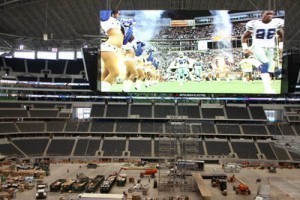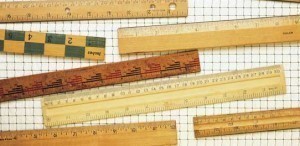Largest HD TV
The largest HD TV in the world is the Mitsubishi video screen at a horserace track in Tokyo, Japan. It is 37 feet tall and 218 feet wide. The screen occupies 8,000 square feet, or 1/5 of an acre. 
Other Facts about the Mitsubishi TV
The screen is made up of 35 pieces. They were delivered and put together at the racetrack. The components were put together via the Aurora Vision LED technology of Mitsubishi. The TV costs 28 million USD. Previously, the record holder was a LED screen at Dolphin Stadium in Miami. It measured 137 feet across.
General Information
HD TV means high definition television. It was developed to improve broadcasting. The broadcasts from the high definition TVs are digital in nature. It is different from the analog formats like SECAM, NTSC and PAL.
HD TV first appeared in 1998. They became very popular with consumers, leading to mass production. Various models were designed, including the largest HD TV in the world.
Specifications
High definition television needs an HD TV tuner to receive HD programming. These tuners are compatible with almost all types of high definition TVs. Some models have tuners built-in. For a TV to be called high definition, it must have an aspect ratio of 16:9.
There must also be 1080 active pixel lines. The screen ratio marks a departure from the standard 4:3 used in older TVs. The 16:9 ratio is used because it is more suitable for widescreen films.
Benefits
High resolution definition is double that of CRT TV sets (1080 to 480). This is just one of its benefits. The image is sharper because it is digt8al. This is true regardless of the TV size.
High definition displays are progressive instead of being interlaced. Progressive means the image is shown continuously. In standard TVs, alternating partial displays are used. Low refresh rates combined with interlaced pixels result in flickering effects.
High definition TVs can be plasma or LCD. In the past, plasma TVs were considered superior to LCD. But recent developments have sort of evened things up. One of the advantages of LCD is that it uses less power than plasma. However, plasma is better in producing blacks and whites.
Although high definition TV took a while to catch on, they can now be found in many homes across the US and the world. However it will probably take a while before sets like the largest HD TV in the world are mass produced.





